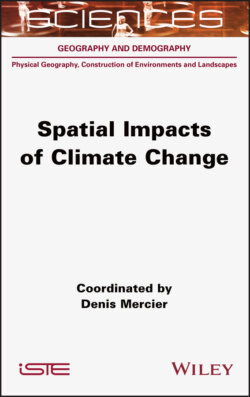Читать книгу Spatial Impacts of Climate Change - Denis Mercier - Страница 13
1.2. Contemporary Arctic-wide climate change
ОглавлениеGlobal warming is not always visible to some, but it is most easily illustrated in the Arctic, particularly with the melting of the cryosphere (see Chapter 2). Indeed, the high latitudes of the boreal regions have recorded an increase in temperature of around 2.5°C since the beginning of the 20th Century, with temperature sequences comparable to those recorded on a global scale. Globally, this temperature increase is mainly due to the last few decades. Seasonally, the winter months (November to April) recorded the greatest temperature increases (see Figure 1.5), although the warmer months also experienced higher temperatures.
Figure 1.5. Spatial distribution of Arctic warming for the period 1961-2014 for the cold season (November to April) and the warm season (May to October)
(source: AMAP 2017). For a color version of this figure, see www.iste.co.uk/mercier/climate.zip
In the Arctic Basin, the Svalbard Archipelago is located in the area with the greatest warming. The curves in Figure 1.6, showing the evolution of temperature since the end of the 19th Century, illustrate both this climate warming on all time scales (annual and seasonal, especially winter) and the increase in annual precipitation. The average temperature in Longyearbyen, (Svalbard archipelago) has increased by 4 to 5°C since the beginning of the 20th Century. Like all the meteorological stations of this archipelago, Longyearbyen, being in a coastal position, is all the more sensitive to the spatial retraction of the winter sea ice in recent years, which explains the more significant increase in winter temperatures in recent decades in particular. Temperature trends are not linear, and cycles of different lengths and amplitudes have been obtained by statistical analyses (Fourier and wavelet, see Humlum et al. 2011). The similarities between the thermal evolutions at the Longyearbyen station and the North Atlantic Multidecadal Oscillations (AMO) underline the importance of the influence of ocean temperatures on that of the lower layers of the atmosphere (Humlum et al. 2011).
Figure 1.6. Temporal distribution of air temperature warming at Longyearbyen, 78° 25' N, 15° 47' E, capital of the Svalbard archipelago, for the period 1898-2019 at different time scales, annual in black, summer (June, July, August) in red, autumn (September, October, November) in purple, winter (December, January, February) in blue, spring (March, April, May) in green. For a color version of this figure, see www.iste.co.uk/mercier/climate.zip
COMMENT ON FIGURE 1.6.- The baseline average is calculated for the period 1961-1990. Change in mean annual precipitation with a five-year sliding average (in pink) (source: based on data from the Norwegian Meteorological Institute3).
For the Ny-Alesund station, located on the northwestern coast of the Svalbard archipelago (78° 55' N, 11° 55' E), Figure 1.7 shows an increase in mean annual temperatures of 4°C from 1969 to 2016 and the increase in predominantly rainy precipitation from 356 mm per year in 1969 to 546 mm per year in 2016. The increase in temperatures largely explains the increase in precipitation due to an increase in the hygrometric capacity of the air, by the increase in the frequency of oceanic disturbances caused by the North Atlantic drift; in winter, in connection with periods when the North Atlantic Oscillation (NAO) index is positive, and in relation to the reduction of the ice pack in the Arctic basin, which allows open sea water to release heat into the lower layers of the atmosphere (see Chapter 2).
Figure 1.7. Annual mean precipitation and annual mean temperatures from 1969 to 2016 at the Ny-Alesund weather station (northwestern Spitsbergen, Svalbard)
(source: Bourriquen et al. 2018, based on data from the Norwegian Meteorological Institute). For a color version of this figure, see www.iste.co.uk/mercier/climate.zip
Thus, whatever the spatial scales used here, contemporary climate change is illustrated by an increase in temperatures and an associated increase in precipitation.
